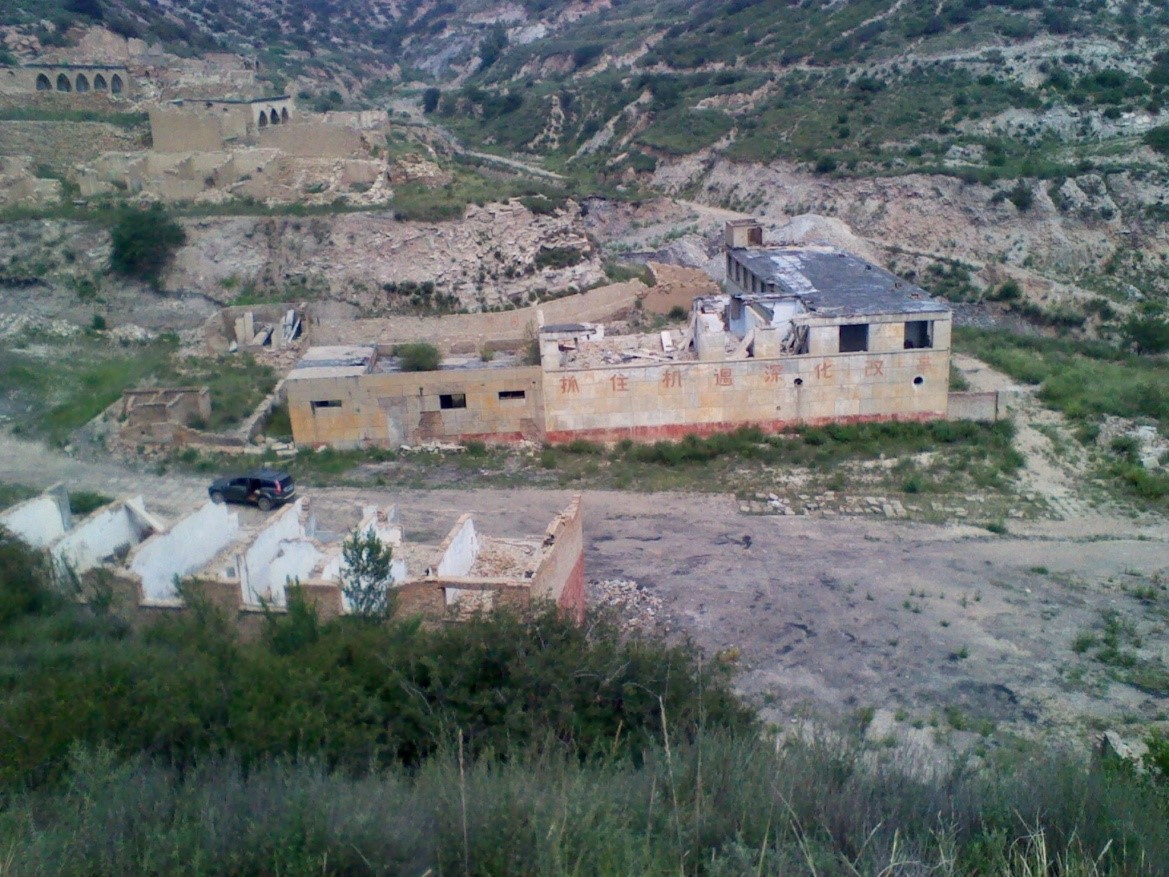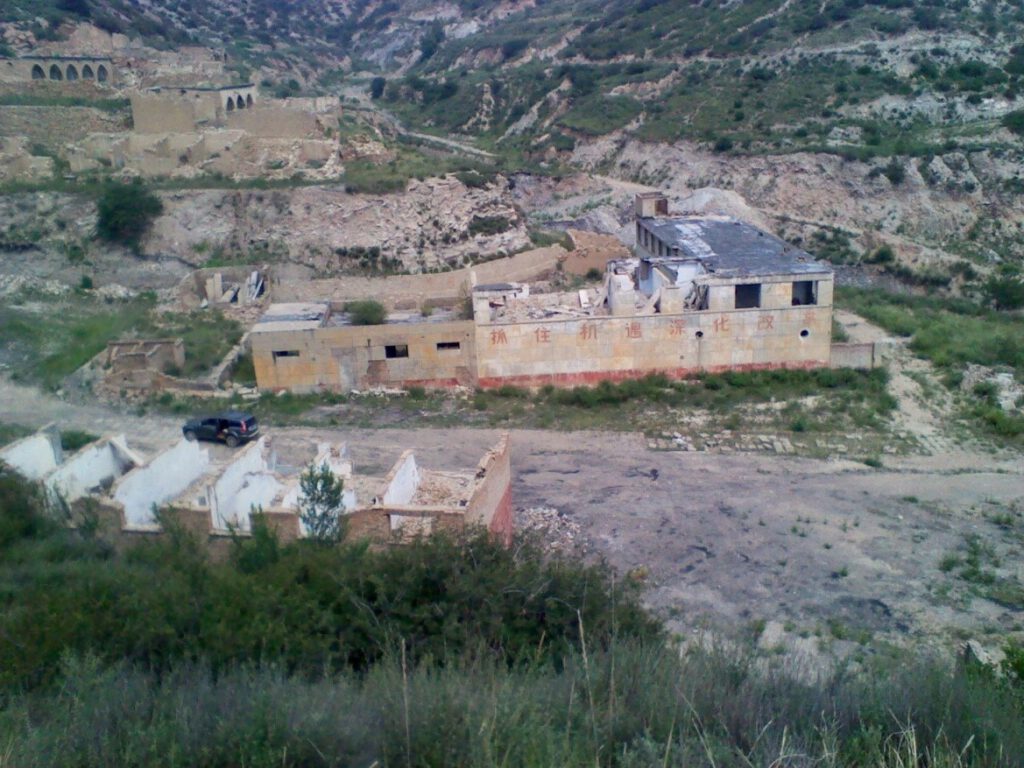ZHANG Yulin, Department of Sociology, Nanjing University
As the ‘World Factory of 21st century’, China uses coal for 2/3 of its energy consumption. Large scale coal mine excavation—which constituted 3.97 billion tons in 2013—has caused serious ecological damage in rural China, with the most severe situation occurring in Shanxi Province.

The recovery deposits and the produced quantity of coal in Shanxi Province amounts to a fifth and a quarter respectively of the national total amount. The total land area of Shanxi is 156,000km2, of which a total of 62,000km2 contains coal deposits. Furthermore, of the 119 county-level administrative regions in Shanxi, 84 undertake coal production. Large scale mining started by the early 20th century. Until 1952, the annual product was still less than 10 million tons, and by 1978, less than 100 million tons. Following China’s opening and reform policy, the establishment of “national energy base” and surging industrial development have stimulated the rapid increase of coal production in Shanxi. Between 1979 and 2000, total production reached 5.4 billion tons (there were more than 10,000 mines at peak time). Between 2001 and 2015, the production was 10 billion tons. In the last five years, the annual excavation is more than 900 million tons, which equals the production in America and more than the total produce in the world at the peak of the industrial revolution in year 1900.
Intensive excavation has been accompanied by multiple disasters. Besides the anxious profit-seeking of the mining companies and lack of monitoring causing repeated safety accidents. The death-toll from mining is staggering; between 1980 and 2004 more than 17,000 miners died from mining accidents, excluding unreported deaths. But perhaps the most serious consequence is the ecological damage, referred to as the “mining geological disaster”. Till 2005, the mine’s total acreage reached 5115km2, among which land sinking happened across 2978km2, involving more than 1,900 villages and 2.2 million people. According to incomplete statistics, in the last ten years, more than 500 people were killed or wounded due to land sinking and house collapse. Furthermore, water resources were damaged in an area as wide as 20,352km2, and more than 3,000 wells and springs dried out, causing 4.97 million people in 8503 villages to encounter difficult access to drinking water. About 200 coal seams self ignited and emitted large amount of toxic gas, and coal gangue self ignition caused 35.8 billion m3 of waste gas each year. Coal related industry (coke production of Shanxi amounts to 40% or 50% of the total national production) also discharge smog, dust and sulphur with an average of around 10 tons/km2. As to the twenty main rivers in the province, between 60% and 70% of the river sections belong to the category of ‘Level 5’ worst water quality, to the extent that it does not have water use function any more.
Looking back at the environmental history accompanied with two hundred years’ of industrialization, the “mining geological disaster” of Shanxi has been unprecedented in both scale and severity. Although the environmental disaster was already occurring in the 1990s, and evolved into survival crisis for farmers with many social issues, systematic control and remedy plans only started by the year of 2005. However, after ten years’ management, many sinking villages are still waiting to be rescued.
Taking an example of the state owned key mining sinking area (about 1,000km2), till 2011 when the remedial plan was declared completed, the number of relocated victims is less than 75% of the planned number (600,000 people); the management of 676 “mining permit abridged” villages in local mining sinking area initiated in 2007 completed two years later only solved housing and drinking water problems for 305 villages, among which were some with the condition of county or township government acquiesced in the contractors’ excavation of the coal mines, resulting in the originally intact lands turning into open-air coal mine sites. As to the already “remedied” villages, my August 2015 investigation of four villages shows absurd results: Shifoyan Village was planned to be relocated already in 2002, but no destined location was selected; Baijiagou Village was incorporated into the management plan in 2006, however the 24-floor apartment building was turned to be private coal mine companies’ “employee residency”. Haojiazhai Village was relocated three times in the past thirty years to new villages still in sinking areas, and new houses soon become dangerous houses, and most of the latest housing quota allocated to the village were resold. Nanzhuanggou Village was incorporated into the relocation plan in 2005, but with no real action for a long time. When villagers petitioned, they got the reply that “our report shows that your village was already relocated” villagers speculated that the houses allocated to them were taken by others instead.
Empirically, the main cause is the lack of finance and repeated change of government officials resulting in a lack of continuity in management and control, the root cause is the distorted political and economic relationship of “government-coal complicity”.
The situation is indeed a “crisis of administration”. Empirically, the main cause is the lack of finance and repeated change of government officials resulting in a lack of continuity in management and control, the root cause is the distorted political and economic relationship of “government-coal complicity”. Moreover, the internal split in the village and the lack of connection among villages, also rendered victims unable to protect their own rights and interests. When the cadres of sinking villages moved to cities, young people also left. The left-over minority of old, weak, sick or disabled lack the capacity to resist and rebuild their villages. This social structure has made the force of causing disasters more powerful, and also made it difficult for an efficient disaster relief system to take shape.
The left-over minority of old, weak, sick or disabled lack the capacity to resist and rebuild their villages. This social structure has made the force of causing disasters more powerful, and also made it difficult for an efficient disaster relief system to take shape.
In 2014, when Shanxi province got its new government leadership, a new cycle of relief plan was published: by 2017, 1.7 million farmers of the coal mining sinking areas will live in safe houses. Although the present plan still can not cover all the population affected, with no new power structure, plus the economic crisis caused by looming coal market—90% county and district governments are not able to pay their civil servants and mining company employees on time—the new cycle of government management will still be an obstacle. As to when this typical “resource curse” of human history will end, it is still unpredictable and ultimately unanswerable.
Professor ZHANG Yulin works in the Department of Sociology of Nanjing University in China. He is also a guest Professor at Kyoto University and Chukyo University etc. Professor Zhang’s main research area is rural society and environmental issues in China. He has a wide publication on rural society during China’s transition, environmental problems, and mining problems in Shanxi.
